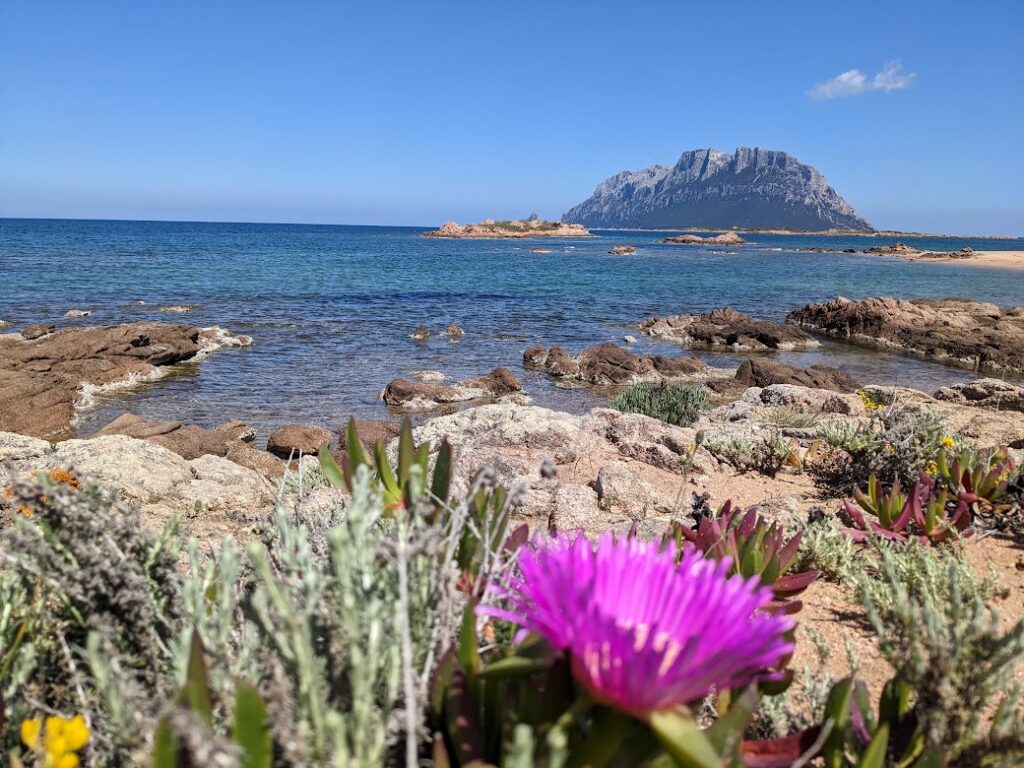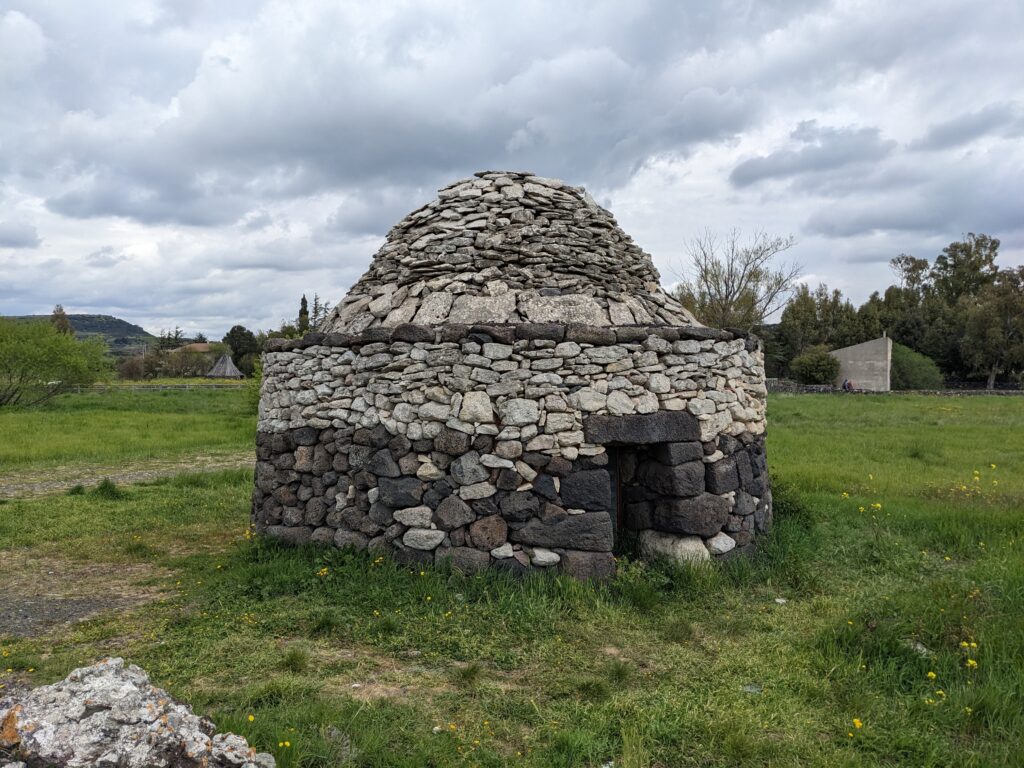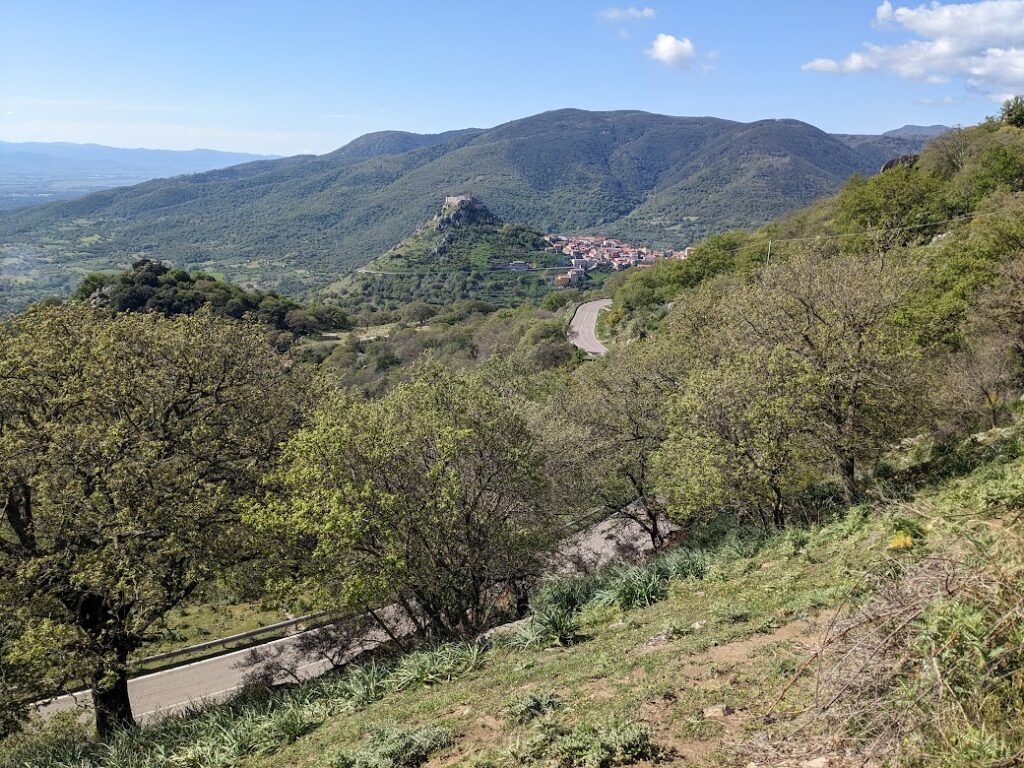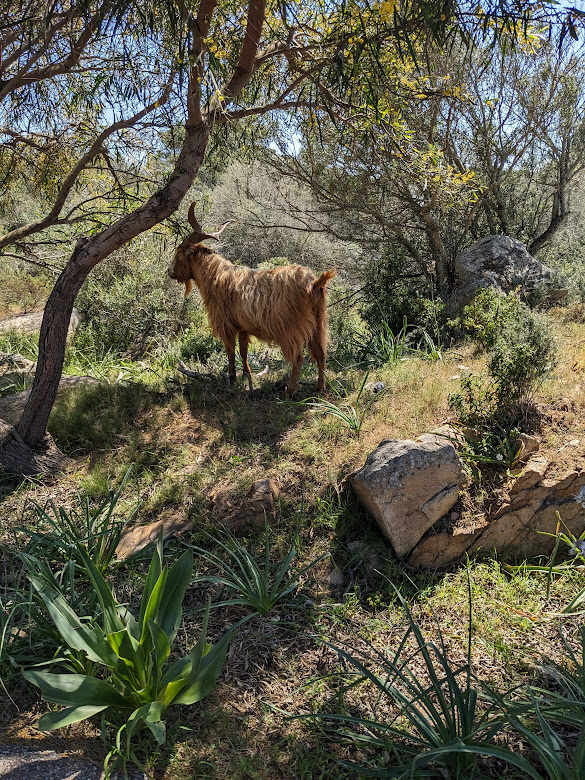
My head for history always gets vertigo when going back in time more than three or four hundred years. So, imagine how dizzy I am feeling today, standing before the ruins of a Nuragic village in the middle of Sardinia, dating back to the Bronze Age.
Please excuse my ignorance, but I had never even heard of the Nuragic Era till about five minutes ago. Probably because it hasn’t existed for about 4000 years, and then, only on the island of Sardinia. Or to be more precise: it lasted from somewhere in the vicinity of 2000 years before Christ, right up to the Roman colonization of Sardinia in 238 BC. Or possibly five hundred years later. So, very loosely speaking in fact, as no one is quite sure. And nothing was put in writing at the time, so now, it’s all down to guesswork.
‘Nuragic’ derives from the name of the era’s most characteristic monument, the Nuraghe, a megalithic tower, and seemingly the cornerstone of the Nuragic culture. To this day, more than 7,000 nuraghes are scattered across the Sardinian landscape about 3 square km apart. Archaeological excavations only began in the 1930s, and there is an ongoing debate among archaeologists about the purpose of these structures: are they religious edifices, military fortresses, tombs, furnaces, or simply protected villages? Recent opinion suggests they were built as defensible dwellings that included barns, wells and grain silos, but there is still much to be determined.
Santu Antine, just outside Touralba, is one of the better known Nuragic sites and one of the most important on the island. Indeed, several coach loads of tourists and school kids arrived before us, and poured into the small café-cum-ticket office that has been set up on the side of a narrow country road. Opposite the carpark, a dirt track lined with stone walls of volcanic rock leads us into the middle of a field and the remains of this ancient village.
It’s an amazing construction, not unlike Dr Who’s Tardis, in its capacity to contain a lot in a seemingly small space. In the shape of an equilateral triangle, the Nuraghe Santu Antine has three corner towers, and a taller central tower which originally rose over 25 metres high. Curving corridors have been created between huge rock walls and run between each tower. We climb steep spiral stone staircases to the upper levels, and wander along the upper terraces to look over the countryside. A central chamber in the main tower curves into a domed ceiling, like a beehive. Another smaller chamber with a similar domed ceiling, sits on top. Suddenly, Christopher Wren’s double dome at St Paul’s Cathedral seems rather less ground-breaking.
The island of Sardinia was once rich in copper and lead mines, the products of which were traded across the Mediterranean. Nuragic people became skilled metal workers, creating a wide variety of bronze figurines, jewellery and weapons such as swords, daggers and axes. There have also been more recent findings of Nuragic sandstone statues up to 2.5 metres high.
Lying in Mediterranean waters to the west of Italy, Sardinia is steeped in layer upon layer of history; or rather strings of spaghetti, in which I have become thoroughly entangled. There are tales from every age: from Neolithic arrow tips of obsidian (black volcanic stone) to Nuragic towers, tombs and small dwellings used more recently as shepherds huts; from Phoenician mariners and Carthaginian warriors to Byzantines and Arabs, who all took turns at invading this small, mountainous island. The Romans sent farmers who planted crops so efficiently, they made Sardinia the grain silo for the entire Roman Empire. In the last few centuries, the Spanish, the Savoys and the Austrians have batted Sardinia back and forth like a shuttlecock, eager to get their hands on the island’s wealth of natural resources. Malaria, massacre and migration have all taken a heavy toll on the indigenous population over the centuries. It wasn’t until 1947 that Sardinia gained a modicum of independence such as they had not enjoyed since the Phoenicians built their first inland fortress in 650 BC. Today, tourism has replaced the mining industry, largely thanks to the Aga Khan’s development of the Costa Smeralda (now the most expensive real estate in Europe) which has helped the island step into the 21st century. Recently, thanks to the huge annual invasion of tourists, Covid has caused as much disruption here as anywhere that attracts international travellers. And in 2021, bush fires destroyed some 50,000 acres of farms and livestock, vineyards and olive groves. One step forward, three steps back…
Enough history? How about some geography? Sardinia is renowned for its glorious beaches and scalloped bays, and wild, rocky coastline. Tourism brochures, websites and my own gospel – the Lonely Planet Guide to Sardinia – wax lyrical about Tahitian style sand, sapphire blue waters and amazing marine life. Inland, it’s a different story. Steep, scrub covered, granite mountains with jagged silhouettes stretch along the skyline. The drive from Cagliari (on the south coast) to Olbia on the east includes a plethora of tunnels that charge across the rugged landscape. Further inland, roads twist and turn through the mountains and forests, and I am glad not to be on a bicycle, while the One & Only longs for his hiking boots.
I have been wanting to visit Sardinia for years. Surprisingly, it has a similar feel to our own Fleurieu Peninsula with slightly higher hills. Vineyards, olive trees, sheep and scrub cover the landscape at lower levels. The climate is almost identical. And, with a current population of just over 1,500,000, it has only a few thousand less people than South Australia, although the geographical size difference is huge: almost one million km² versus 24,100 km². So far, we have avoided Costa Smeralda, its wealthy tourists and its astronomical prices. The seaside towns further south are perfectly lovely, and low key, which we prefer, although I am sure they will get swamped with visitors in the summer. The colour of the water is breath-taking wherever you go, and our little cottage overlooks fields full of wildflowers that stretch across to the San Teodoro lagoon. The gorse spreads the scent of Piña Coladas on the warm breeze. A variety of raptors wheel overhead. And who knew Sardinia was a popular playground for pink flamingos?
Spotting wildlife has become a bit of a thing, every time we leave the cottage. Flamingo babies, tall and lanky but still white – their plumage will take a few years to turn pink – are plentiful in the estuaries and coastal lagoons. Wild goats with enormous horns dwell merrily on Isola Caprera, where Garibaldi lived for 24 years. The Tyrrhenian wall lizard is everywhere, clothed in bright green, almost psychedelic in the sunshine, and darts away like the Roadrunner as soon as it sees me. We even saw a tortoise yesterday, about as big as my hand, mumbling along in leisurely fashion through the scrub. Unaccountably, we haven’t spotted a single kangaroo, but I am on the look out for wild horses and wild boar.
I have bravely taken a quick dip in the sea and almost died of hypothermia – perhaps it is a bit early in the season for swimming. The cold winds sweeping along the beach haven’t helped. But there’s always a coffee or a glass of vermentino to reignite the life force once we emerge from the waves.
And so, it is time for a siesta and the anticipation of uncorking another bottle of Vermentino on the veranda in the late afternoon, and a plate of prosciutto and pecorino. Happy days…



